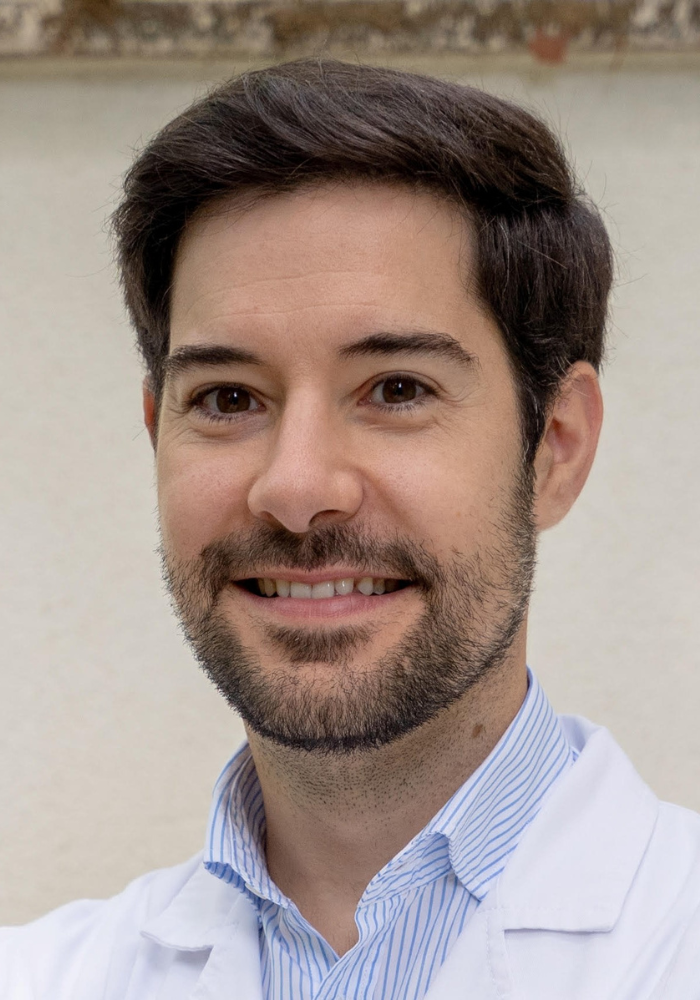
David Saceda, MD, PhD – Featured Guest Speaker
Dermatologist, University Hospital Ramón y Cajal, Madrid, Spain
Dr. Saceda will speak on: Managing Frontal Fibrosing Alopecia
Dr. David Saceda Corralo is a dermatologist who works in the Hair Disorders Unit of Hospital Ramón y Cajal and Grupo de Dermatología Pedro Jaen, in Madrid (Spain). His clinical activity is focused on hair loss and hair transplant. He is also a teacher in University of Alcalá, where he did his PhD on frontal fibrosing alopecia. Today his clinical research is focused in immune-induced alopecias, such as frontal fibrosing alopecia and alopecia areata. He has authored more than 100 scientific publications and coordinates the scientific content of the Master’s Degree in Trichology and Hair Transplant.
********************
Watch Lecture Intro Video
Summary Notes for Intro Video
An intro discussion on Dr. David Saceda’s presentation at the ISHRS World Congress: “Managing Frontal Fibrosing Alopecia.”
Introduction:
Dr. David Saceda, a distinguished dermatologist and hair transplant surgeon is welcomed by Dr. Sam Lam, Program Chair for the upcoming ISHRS Annual Congress. In this segment, Dr. Saceda offers insights into frontal fibrosing alopecia (FFA), an autoimmune condition whose cases have increased over the past decade. The discussion delves into its possible causes, current treatment options, and key considerations for surgical intervention.
Key Discussion Points:
[00:01:00] Potential Causes of FFA:
Genetic background
Environmental Triggers: Hormonal exposure such as oral contraceptives, hormonal treatments, or even cosmetic ingredients.
Sunscreen Hypothesis: While the link remains unproven, both doctors consider its potential relevance.
[00:02:30] Genetic Research on FFA:
Dr. Saceda outlines collaborative studies identifying key genes like CYP1B1, which is involved in hormonal metabolism and environmental interactions, potentially offering insights into the condition’s underlying mechanisms.
[00:03:30] Management Strategies for FFA:
Topical Treatments: Includes corticosteroids, calcineurin inhibitors, and JAK inhibitors.
Oral Medications: Hydroxychloroquine, dutasteride, and minoxidil are commonly used to slow disease activity.
Emerging Therapies: Topical JAK inhibitors show early promise in managing inflammation and progression.
[00:05:05] Surgical Considerations for FFA:
Stability Requirement: Hair restoration surgery is only performed if the disease has been inactive for at least two years.
Extent of Alopecia: Surgery is feasible in patients with limited frontal and temporal hair loss.
PRP Injections: Platelet-rich plasma therapy improves skin quality and enhances graft success.
[00:07:00] Post-Surgical Management:
Topical anti-inflammatory treatments, including corticosteroids and JAK inhibitors, can be safely resumed two to four weeks post-surgery without affecting graft viability.
Dr. Saceda’s Notable Quotes:
“There must be some new environmental factors, and from my point of view, hormonal exposure plays a role in triggering FFA in genetically predisposed patients.”
“The gene CYP1B1, which is tied to hormonal metabolism, suggests environmental hormonal factors may play a role in FFA development.”
“PRP before and after surgery significantly improves outcomes, especially in cases where local skin atrophy is present.”
Conclusion:
This episode offers valuable insight into the multifactorial nature of frontal fibrosing alopecia, with a focus on genetics, environmental triggers, and treatment pathways. Dr. Saceda’s comprehensive approach to managing FFA provides actionable knowledge for both clinicians and researchers in the hair restoration field.
Don’t miss Dr. Saceda’s presentation at the ISHRS Congress in Berlin, October 23–25, 2025, where he will share more on frontal fibrosing alopecia.